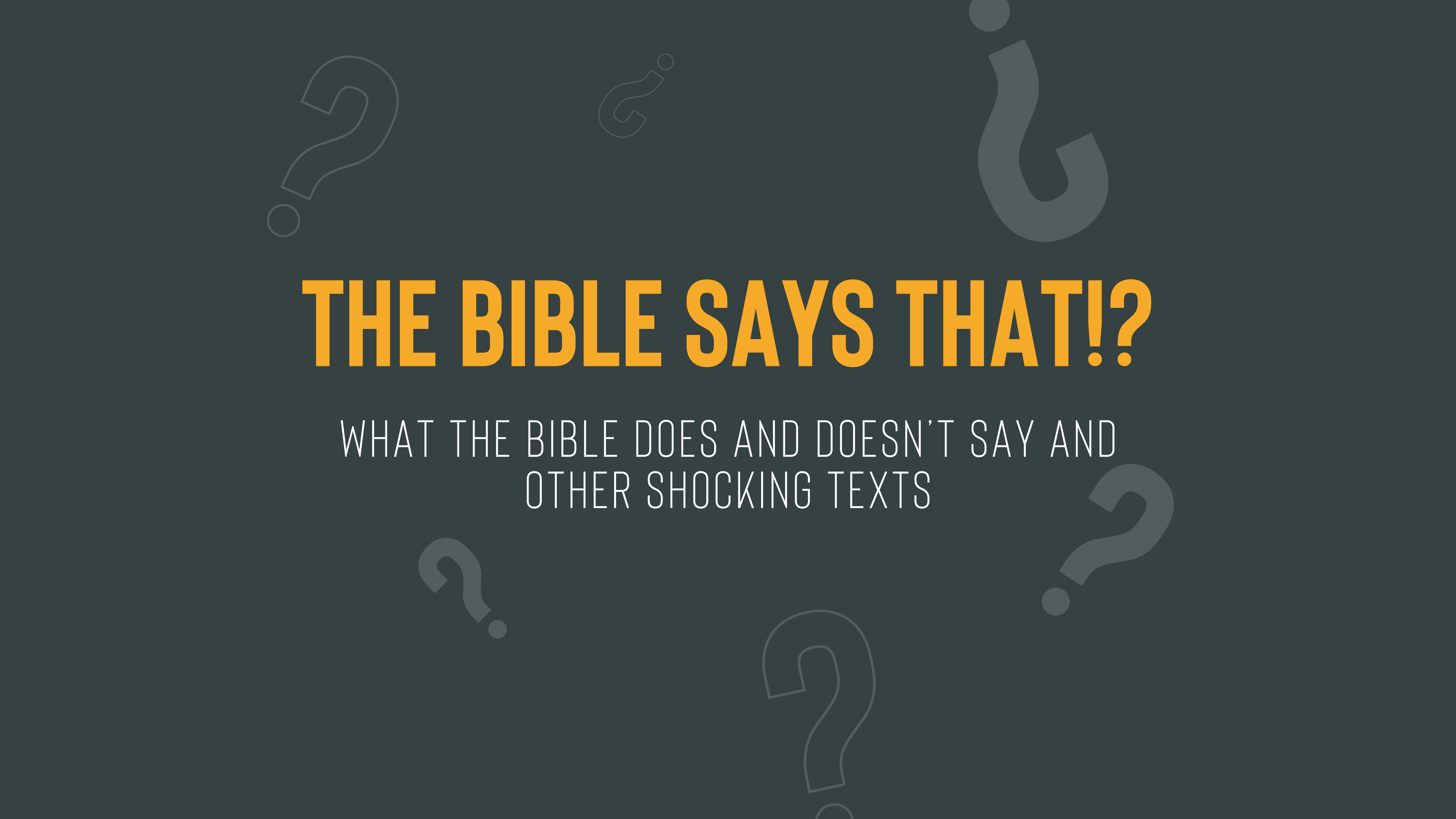The Bible Says That!? - Who Wrote The Torah? Pt. 8

Click "Play" below to listen as you read along
Last week, we talked about the converging lines of evidence that support these theory and how all of these buckets of data as a whole are better than just one field of evidence. Today, we're going to talk about how literary doublets fit into all of this as well as a New Testament comparison to the Source Documentary Hypothesis.
It’s not so much that so many doublets exist, but rather that so many doublets exist and yet still line up so consistently with the 6 categories of evidence we’ve talked about so far. Let’s talk about a few examples:
Gen. 1:1-31 (P) and Gen. 2:4b-25 (J)
Abrahams Migration. Gen 12:1-4a (J) and 12:4b-5 (P)
Abraham wife/sister thing Gen 12:10-20 (J) and 20:1-18 (E) and 26:6-14 (J)
Abraham and Lot separate Gen 13:5,7-11a, 12b-14 (J) and 13:6, 11b-12a (P)
The Abrahamic Covenant Gen 15 (J) and 17 (P)
Jacob’s name changed to Israel. Gen. 32:25-33 (E) and 35:9-10 (P)
The Passover. Exod. 12:1-20, 28,40-50 (P) and 12:21-27,29-36, 37b-39 (E).
Manna and quail in the wilderness. Exod. 16:2-3, 6-35a (P) and Num 11:4-3 (E)
Water from a rock at Meribah. Exod. 17:2-7 (E) and Num 20:2-13 (P)
The 10 commandments. Exod. 20:1-17 (R) and 34:10-28 (J) and Deut. 5:6-18 (D)
Forbidden animals. Lev. 11 (P) and Deut. 14 (D)
Centralization of Sacrifice. Lev. 17 and Deut. 12
Lev. 23 (P) and Numbers 28-29 (R) and Deut. 16:1-17 (D)
Appointment of Joshua. Num. 27:12-23 (P) and Deut. 31:14-15,23.
Heresy at Peor. Num 25:1-5 (J) and 25:6-19 (P).
Given all of this evidence, there is no way that a scholar could just be making all of this up. To have everything line up so consistently is not something that we can just cleverly invent. No matter how smart I was, there’s no way that I could just separate everything out so precisely. The best argument is that there were separate authors that God was working through and writing through to bring us this text.
This theory proposes that 4-ish sources are interwoven together into one giant cohesive text. Each source has their own unique characteristics, styles, regions, and perspectives. But they are all interconnected.
Do you think we have something else in the Bible that is exactly like what I just asked you about?
The synoptic Gospels are exactly like this source hypothesis. Let me give you some comparisons:
Multiple versions of the same story
Synoptics:
Feeding of the 5000 (Matt.14:13-21; Mark 6:31-33; Luke 9:10-17)
Jesus Baptism + Similar phrasing (Mark 1:9-11; Matt. 3:13-17)
JEDP
Creation Stories J(Gen 1) and P(Gen 2)
Flood Stories J(Gen 7) and P(Gen 6)
Use of Shared and independent sources
Synoptics
Mark is believed to be the oldest gospel, used as a source by Matthew and Luke
Matthew and Luke both have unique material to themselves.
JEDP
J and E likely wrote separately but were combined early on because they are so similar. Likely the oldest.
P was added later and drew from J and E, but focused on Priestly law and ritual.
D appears independently and was likely written later.
Geographic and theological Agendas
Synoptics
Matthew written for the Jewish people. Jesus seen as the Promised Messiah
Mark is rough Hebrew. Jesus is seen as a Suffering Servant.
Luke is written with all people in mind. Jesus is the universal Son of Man.
JEDP
J (Judah): Emphasizes the Southern tribes. God is personal
E (Israel): Emphasizes the Northern tribes. God is distant.
P: The Priesthood is super important, and sacrifices are emphasized.
D: The Law and covenants are super important, and faith reform is emphasized.
Repetition and Contradicting Material
Side note: Without the source theory, trying to explain away every apparent contradiction and repetitive event is extremely difficult. With the theory, this problem is not nearly as much of an issue and is far easier to explain.
Synoptics
Genealogies of Jesus differ in Matthew 1:1-17 and Luke 3:23-28
Temptation of Jesus – the order of temptations are different from Matthew and Luke.
JEDP
Who names Isaac?
E: Abraham names him in Gen 21:3
P: God tells Abraham to name him Isaac in Gen 17:19
When did the flood start?
J: After the 7 days of warning
P: On the exact day in Gen 7:11
These don’t mean error within the text, but they do reveal the literary purposes of each text by displaying the diversity of the different traditions and sources as we've already talked about previously.
Next week, we're going to look at the traditional understanding of Mosaic authorship as well as the counterarguments to the Source Documentary Hypothesis.
